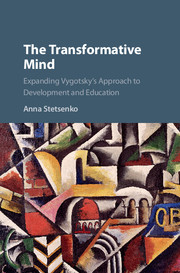Book contents
- The Transformative Mind
- The Transformative Mind
- Copyright page
- Dedication
- Contents
- Book part
- Introduction: Setting the Stage. The Paradox of Continuity versus Change
- Part I
- Part II
- Part III
- Part IV
- Part V
- Concluding Remarks: Toward Democracy and a Pedagogy of Daring
- Bibliography
- Name Index
- Subject Index
- References
Bibliography
Published online by Cambridge University Press: 17 November 2016
- The Transformative Mind
- The Transformative Mind
- Copyright page
- Dedication
- Contents
- Book part
- Introduction: Setting the Stage. The Paradox of Continuity versus Change
- Part I
- Part II
- Part III
- Part IV
- Part V
- Concluding Remarks: Toward Democracy and a Pedagogy of Daring
- Bibliography
- Name Index
- Subject Index
- References
- Type
- Chapter
- Information
- The Transformative MindExpanding Vygotsky's Approach to Development and Education, pp. 373 - 410Publisher: Cambridge University PressPrint publication year: 2016



